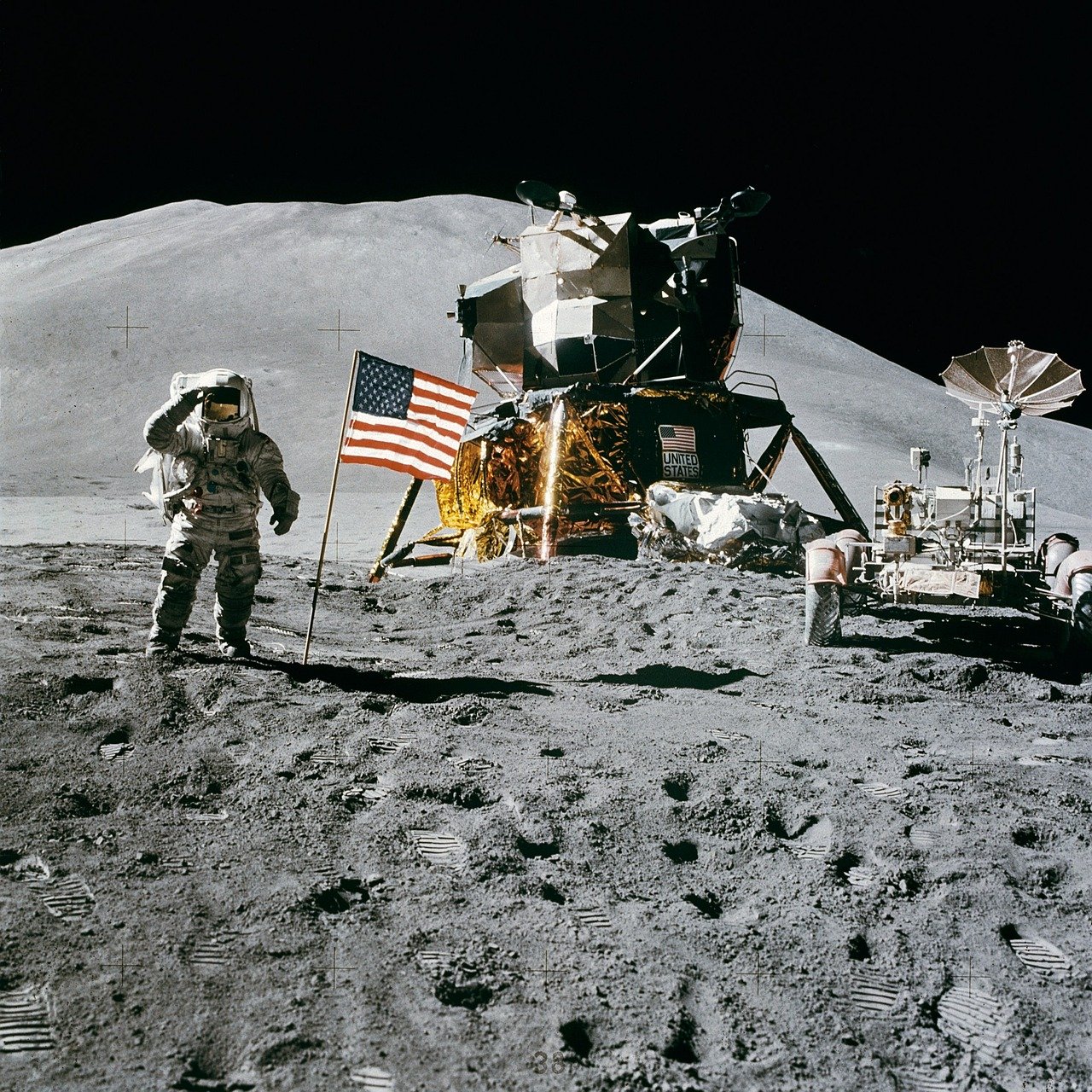Mars Beckons with Unprecedented Scientific Opportunities
Imagine waking up tomorrow to find that everything we thought we knew about human existence was fundamentally wrong. NASA is on track to return scientifically selected samples from Mars, announcing plans to proceed toward confirmation. NASA’s ambitious, multi-mission campaign will bring carefully selected samples — which the Perseverance rover is currently collecting — from the surface of Mars to research labs on Earth, for scrutiny impossible onsite at the Red Planet. The stakes couldn’t be higher, and the implications could shake the very foundations of our understanding of life itself. Mars Sample Return would fulfill one of the highest priority solar system exploration goals from the science community, and the returned samples would revolutionize our understanding of Mars and our solar system. This isn’t just another mission – it’s potentially the discovery that rewrites human history books forever.
The Red Planet’s Ancient Secrets May Hold Life’s Blueprint
NASA’s Perseverance rover explores the Red Planet searching for signs of ancient microbial life, it’s also testing spacesuit materials to protect life and limb for future astronauts. The rover has been systematically collecting samples that could contain the first evidence of life beyond Earth. As of January 2025, Perseverance has rolled 20.35 miles (32.76 kilometers) to collect 26 samples of rock, dirt, and dust (as well as one air sample!). Each sample represents a potential window into Mars’ ancient past, when the planet may have harbored conditions suitable for life. If even microscopic fossilized organisms are found, it would prove that life isn’t unique to Earth – fundamentally changing how we view our place in the universe.
Space Telescopes Unveil Worlds That Challenge Everything
The James Webb Space Telescope isn’t just looking at distant stars – it’s redefining what we know about planets that could host life. Webb’s new images of two iconic systems, HR 8799 and 51 Eridani, and their planets have stunned researchers, and provided additional information into the chemical make-up of the young gas giants. These discoveries go far beyond simple planet hunting. Of the nearly 6,000 exoplanets discovered, few have been directly imaged, as even giant planets are many thousands of times fainter than their stars. The images of HR 8799 and 51 Eridani were made possible by Webb’s NIRCam (Near-Infrared Camera) coronagraph, which blocks light from bright stars to reveal otherwise hidden worlds. Think about that for a moment – we’re now capable of seeing planets orbiting other stars with unprecedented detail.
The Coldest World Ever Found Orbits a Dead Star
Astronomers using the James Webb Space Telescope (JWST) have detected the first planet seen orbiting a dead star, offering new insights into how planets evolve during the final stages of a star’s life. The James Webb Space Telescope’s observations of the exoplanet, named WD 1856+534 b, also confirm it is the coldest exoplanet to date, which could pave the way for the first detailed atmosphere studies of such extreme worlds. This discovery challenges our assumptions about planetary survival and evolution. While the JWST hasn’t yet reached its theoretical capability of detecting planets as cold as -324.67 degrees Fahrenheit (-198.15 degrees Celsius), upcoming programs aim to reach that threshold. And, if all goes to plan, those forthcoming data would accelerate detections of temperatures, ages and masses of exoplanets similar to Jupiter and Saturn. We’re essentially watching the universe’s most extreme survival story unfold.
Artemis Program Prepares to Unlock Lunar Time Capsules

The Moon isn’t just a celestial neighbor – it’s Earth’s oldest history book, and NASA’s about to crack it open. Engineers, technicians, mission planners, and the four astronauts set to fly around the Moon next year on Artemis II, NASA’s first crewed Artemis mission, are rapidly progressing toward launch. At the agency’s Kennedy Space Center in Florida, teams are working around the clock to move into integration and final testing of all SLS (Space Launch System) and Orion spacecraft elements. The Moon’s surface preserves a record of the early solar system that could reveal crucial information about Earth’s formation and the conditions that led to life. Then, we will use what we learn on and around the Moon to take the next giant leap: sending the first astronauts to Mars. Artemis I was the first in a series of increasingly complex missions that will enable human exploration at the Moon and future missions to Mars. Every rock sample and core drilling could unlock secrets about our planet’s violent early history.
Revolutionary Molecular Discoveries in Alien Atmospheres
Scientists just found something that shouldn’t exist in any planetary atmosphere – yet there it is, defying everything we thought we knew. “A pair of new studies has revealed that the hellish skies of exoplanet WASP-121b contain silicon monoxide gas, which has never been found in any planetary atmosphere to date. “Detecting SiO in WASP-121b’s atmosphere is groundbreaking,” Anjali Piette, an astronomer at the University of Birmingham in the U.K. and co-author of the Nature Astronomy study, said in a statement. “[It is] the first conclusive identification of this molecule in any planetary atmosphere.” This isn’t just a chemical curiosity – it represents our expanding ability to analyze alien worlds in unprecedented detail. Instead, the molecule likely originates from silicate-rich materials, such as quartz, inside asteroids that have burned up in WASP-121b’s atmosphere. The compound has remained in a gaseous state due to the incredibly high temperatures on the day side.
Earth’s Climate History Reveals Shocking Human Migration Patterns

Earth-orbiting satellites and new technologies have helped scientists see the big picture, collecting many different types of information about our planet and its climate all over the world. These data, collected over many years, reveal the signs and patterns of a changing climate. But here’s where it gets really interesting – these same satellites are rewriting human history by revealing how ancient climate events shaped human civilization. Data from the Gravity Recovery and Climate Experiment (GRACE) mission; the Ice, Cloud, and land Elevation Satellite (ICESat) mission; and other satellites showed unexpectedly fast changes in Earth’s great ice sheets. The Jason-3, Ocean Surface Topography Mission (OSTM)/Jason-2, and Jason-1 missions recorded a sea level rise of nearly 4 inches (about 10 centimeters) since 1993. These measurements help archaeologists understand when and why ancient civilizations migrated, collapsed, or flourished. Picture entire populations moving across continents not by choice, but driven by climate changes we can now track with satellite precision.
AI and Machine Learning Decode Cosmic Patterns Humans Missed
The sheer volume of data flooding back from space missions would overwhelm any team of human researchers, but artificial intelligence is finding patterns that were invisible before. Modern rovers use autonomous systems to identify interesting targets and make split-second decisions about what to investigate. Lothringer, who has been co-author on 20 publications based on JWST observations, including the Early Release Science observations of WASP-39b, has built an exoplanet dashboard that gives data related to the JWST’s exoplanet studies. The dashboard features a striking and frequently updated GIF that visualizes the planets studied, having them appear by name and according to their mass and the time it takes them to orbit their parent star. These technological advances allow scientists to process information faster than ever before, potentially identifying signs of ancient life or unusual atmospheric compositions that human eyes might miss. The combination of AI pattern recognition and space-based observations is creating an entirely new way of studying the universe.
K2-18b Might Be Our First True Water World Discovery

K2-18 b orbits the cool dwarf star K2-18 in the habitable zone and lies 120 light-years from Earth in the constellation Leo. Exoplanets such as K2-18 b, which have sizes between those of Earth and Neptune, are unlike anything in our solar system. This mysterious world has captured scientists’ attention because it might represent an entirely new class of planet. JWST observations of the sub-Neptune K2-18b made headlines last year after researchers detected carbon dioxide and methane but no ammonia — an expected component of gas planets — in its atmosphere. The team interpreted this gas mix as evidence for a water world since ammonia dissolves easily in water and would get trapped in an ocean if it were there. Imagine a planet where vast oceans dominate the surface under a thick hydrogen atmosphere – conditions completely alien to anything in our solar system. The suggestion that the sub-Neptune K2-18 b could be a Hycean exoplanet is intriguing, as some astronomers believe that these worlds are promising environments to search for evidence for life on exoplanets.
The Universe’s Most Extreme Laboratories Test Life’s Limits

NASA’s discoveries aren’t just finding comfortable, Earth-like worlds – they’re revealing that life might thrive in conditions that would instantly kill anything on our planet. “We also think that understanding how gas giant planets behave in general can help us understand our own solar system and how it formed,” Lothringer continued. “JWST is good at finding and studying exoplanets for two main reasons. Some of these worlds experience temperatures exceeding 7,000 degrees Fahrenheit, have molten metal rain, or exist in the vacuum of space around dead stars. Each extreme environment discovered expands our understanding of where life might be possible. These findings force us to reconsider fundamental assumptions about biology and evolution – if life can potentially exist in such harsh conditions, what does that mean for the likelihood of finding it elsewhere?
Sample Return Missions Could Bring Alien Life to Earth
By 2025, NASA plans to achieve something that sounds like science fiction – bringing pieces of other worlds directly to Earth for analysis. Various Mars sample return missions are being planned like NASA-ESA Mars Sample Return that will pick up the samples currently being collected by the Perseverance rover. The implications are staggering: for the first time in human history, we’ll have material from another planet sitting in our laboratories. Scientists will use electron microscopes, chemical analyzers, and other precision instruments impossible to send to Mars to examine these samples grain by grain. If those samples contain fossilized microorganisms or organic compounds that suggest past life, it would represent the most significant discovery in human history. The Mars 2020 mission Perseverance rover is the first step of a roundtrip journey to return Mars samples to Earth. NASA and ESA are planning ways to bring the first samples of Mars material back to Earth for detailed study.
International Collaboration Creates Unprecedented Scientific Power

The scope of NASA’s 2025 discoveries isn’t happening in isolation – it represents the largest international scientific collaboration in human history. Teams from dozens of countries contribute expertise, funding, and technology to missions that no single nation could accomplish alone. NASA also announced its second agreement with an international space agency to fly a CubeSat on the mission. The collaborations provide opportunities for other countries to work alongside NASA to integrate and fly technology and experiments as part of these groundbreaking missions. When archaeologists, geologists, biologists, and planetary scientists work together, they create a multidisciplinary approach that reveals connections previously hidden. Webb is an international program led by NASA with its partners, ESA (European Space Agency) and the Canadian Space Agency. This global effort means that discoveries made in 2025 will represent the combined intellectual power of our entire species.
The Search for Biosignatures Reaches New Sensitivity Levels

NASA’s instruments have become so sensitive that they can detect molecules in alien atmospheres from hundreds of light-years away. The starlight’s passage through the exoplanet atmosphere leaves traces that astronomers can piece together to determine the gases of the exoplanet’s atmosphere. “This result was only possible because of the extended wavelength range and unprecedented sensitivity of Webb, which enabled robust detection of spectral features with just two transits,” said Madhusudhan. Scientists are specifically looking for combinations of gases that could only exist if life is present – oxygen and water vapor together, or methane in the presence of carbon dioxide. JWST detected signs of methane and carbon dioxide in the atmosphere of K2-18 b. Knicole Colón, the deputy project scientist for exoplanet science for JWST, explains how this discovery could reshape our search for life beyond Earth and teach us more about the enigmatic class of exoplanets known as sub-Neptunes. Each measurement brings us closer to answering the ultimate question: are we alone?
Technology That Seemed Impossible Just Decades Ago

Among all operating telescopes, only Webb is capable of characterizing the atmospheres of Earth-sized exoplanets. The team attempted to assess what is in the planet’s atmosphere by analyzing its transmission spectrum. Consider what this means: humans have built machines capable of analyzing air on worlds so distant that light takes decades to reach us. Researchers confirmed an exoplanet, a planet that orbits another star, using NASA’s James Webb Space Telescope for the first time. Formally classified as LHS 475 b, the planet is almost exactly the same size as our own, clocking in at 99% of Earth’s diameter. We’re living in an era where robotic explorers traverse alien landscapes, space telescopes peer into the atmospheres of distant worlds, and artificial intelligence helps decode patterns in cosmic data. The James Webb Space Telescope has revolutionized astronomy in just three years. A new project celebrates its impact on the study of exoplanets, worlds beyond the solar system. The technology enabling these discoveries would have been considered magic just a generation ago.
The Most Important Question in Human History
All of these missions, technologies, and discoveries converge on a single, profound question that could be answered in 2025: are we alone in the universe? The discoveries of 2025 mark a new era in exoplanet research. From Earth-like worlds in the habitable zone to extreme planets with volcanic activity, each finding brings us closer to an answer that would fundamentally change human civilization. Whether we find microbial life in Martian samples, detect biosignatures in alien atmospheres, or discover evidence of past civilizations in Earth’s climate records, the implications would ripple through every aspect of human knowledge. Religion, philosophy, science, and our basic understanding of what it means to be human would all be transformed. NASA is currently developing the Earth System Observatory (ESO). The core of ESO is five satellite missions that will provide essential data on climate change, severe weather, natural hazards, wildfires, and global food production. These observations will address the most pressing questions about our changing planet identified in the 2017 Earth Science Decadal Survey conducted by the National Academies of Science, Engineering, and Medicine.
The year 2025 might be the moment when everything changes. When children ask their grandparents about life before we knew we weren’t alone, or before we understood how climate shaped the rise and fall of civilizations, or before we could peer into alien skies and analyze their very atoms. The technology is ready, the missions are underway, and the data is flowing back to Earth at an unprecedented rate. What would you have guessed could happen next?

